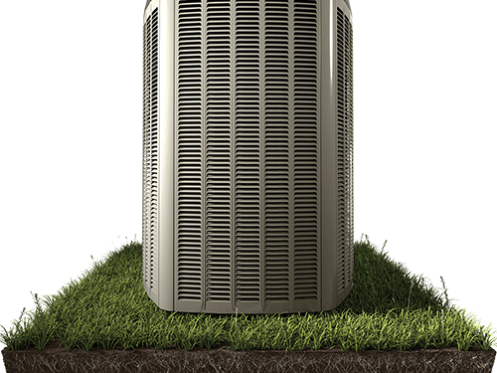If you ask most homeowners how their air conditioning system actually works, most of them can’t tell you. In fact, air conditioners are one of those things that many people rely on upon without actually understanding their inner workings. As a homeowner, it’s in your best interest to understand how your air conditioning system works. This way, if you experience a problem, you may be able to fix it yourself. Or, maybe you’ll be more comfortable with paying a professional to repair your unit.
Turning Your AC On
When the summertime heat comes back around, you switch your thermostat to the cooling function. You specifically indicate the desired temperature that you want your house to be, like 78 degrees. The thermostat on your air conditioning system will constantly monitor the ambient temperature of your home. If your home’s temperature reaches above what your desired temperature is, your thermostat will signal to the rest of your air conditioning unit to kick on.
Understanding Your Air Handler
When the rest of your air conditioning unit kicks on, the air handler will pull air through the return vents of your ductwork. Each room in your home has both a return vent that pulls air into your air conditioner and a supply vent that delivers cooled air into the room. As the air handler pulls the warm air inside your home through your air conditioning system, it pass through the air purifier and the air filter.
An air purifier works to remove unwanted pollutants from the air inside of your home. This system addition is typically recommended for families who experience allergies or have upper respiratory illnesses. Every home air conditioning system has an air filter. This filter also works to remove unwanted pollutants like dust and pollen from the air. How many pollutants are removed from the air will highly depend on the specific type of air filter that you use in your system.
Passing Your Evaporator Coil
The next stage in your air conditioning system is where the air from inside of your home passes over the evaporator coil. Inside the evaporator coil is a substance known as refrigerant. This refrigerant is in a liquid form and is utilized to remove heat from the air that passes over the evaporator coil. Instead of thinking of your air conditioner as a way to cool your air, in reality, it’s a way of transferring heat from the air inside of your home to the outdoors. As the air goes over the evaporator coil, the heat moves from the air into the refrigerant and turns the refrigerant into a gaseous state.
The air that passes over the evaporator coil continues to move along through the ductwork in your home to your supply vents for each room. Since the air has had the heat removed from it and transferred to the refrigerant, the air is cooled off. This is how cold air is formulated in your centralized air conditioning system.
Moving Outdoors
Next, the refrigerant is pumped to the outdoor compressor unit. Inside of this unit, there is a condenser coil through which the gas refrigerant flows. The unit also has a fan that helps to bring fresh air from the outdoors across the condenser coil. As the air flows over the condenser coil, the heat from the refrigerant is dispersed naturally into the air. This is essentially the opposite of what the evaporator coil does.
As the refrigerant turns back into a liquid state because the heat is removed, it makes its way back into your house via copper tubing. The last stop in the air conditioning process is at the expansion valve for the evaporator coil. Before the refrigerant moves into the evaporator coil to start the process all over again, it goes through the expansion valve. This valve helps to change the pressure of the refrigerant so that it can accept the heat once again. It also works to regulate the amount of refrigerant that can be put into the evaporator coil at one time.
Main Types of Home AC Units
There are three main types of air conditioning systems that homeowners can purchase for their homes. These include a split system, package system, and a ductless system. In the information that we went over above about how an air conditioning system works, we described what is known as a split system air conditioning unit. This is the most common type of air conditioning unit that homeowners have.
While both package systems and ductless systems have many of the same components as a split system air conditioning unit, their placement is a little bit different. When it comes to a packaged air conditioning system, both the evaporator coil and the condenser coil are housed in the same unit. These are typically installed where there is a lack of space on the inside of a home, and a traditional split system unit wouldn’t fit. The packaged air conditioning system will be a complete outdoor unit that pumps the hot air outside and then pumps the cold air back inside.
The last type of system that you can get is called a ductless air conditioning system. These are very popular for already existing homes that don’t have any ductwork. They’re also great for adding heat and air conditioning for new additions to a home where there are no connections to the existing ductwork. Ductless systems are comprised of a wall-mounted unit that is connected to an outdoor compressor unit via piping. This piping runs directly from the wall-mounted unit to the exterior of the home and down to the compressor unit.
Energy-Saving Tips
Any homeowner who currently has an air conditioning system in their home knows that it can be quite expensive in the summer months. The reality is that it doesn’t have to be. There are many different strategies you can use to help reduce the amount of energy that your house uses to keep itself cool in the summertime.
A great strategy to utilize is to install ceiling fans in the most trafficked rooms of your home. These include your living room, kitchen, and your bedrooms. Simply by turning the fan on and having it blowing downward, it can make your room feel between 2 and 8 degrees colder than it actually is. This is one simple fact that can make your family feel more comfortable without having to turn the thermostat down.
Another great strategy to utilize is to program your thermostat to increase the temperature by 10 degrees when you know you won’t be at home. This is perfect for families where everyone’s away from home at either work or school during the daytime hours. You simply turn the thermostat up so that it doesn’t run when you’re not there. Then, you can set it to turn back on about an hour before you know your family is going to get home. This will ensure that your family gets to walk into a nice and cool home without having to waste money running your AC all day long.
Quality AC Services
Summit Heating & A/C provides quality air conditioner services in the Denver Metro region. We offer both heating and repair installation, maintenance, and repairs. We also offer indoor air quality assessments, air purifiers, and plumbing services. Give us a call today and we’ll handle all of your needs!


